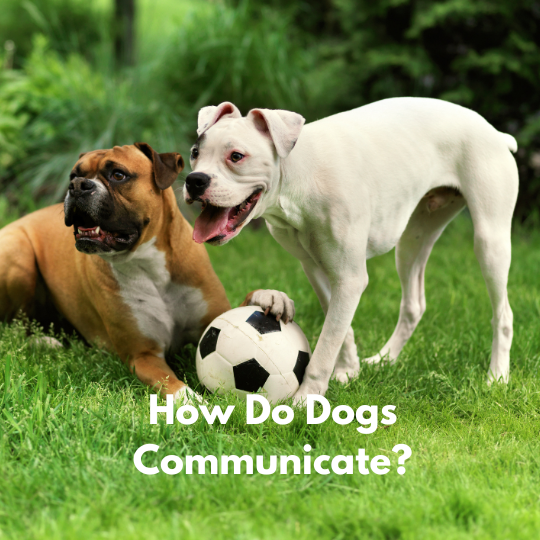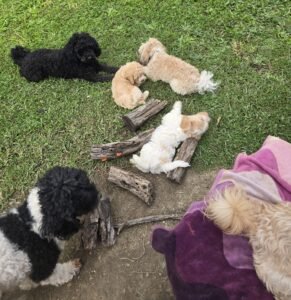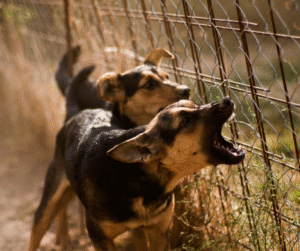How do dogs communicate both with us and with other dogs?
As humans (two legged animals) we are a verbal species that relies heavily on what we say and what we hear for our communication. Body language, tone and intonation are important but are mostly subconsciously absorbed and processed by our brain to add to what we are hearing or saying. Not so our dogs. The primary language of dogs, and in fact all four legged animals is body language. All animals have some degree of vocalization but it is not the primary means of communication. It is mostly, in dogs, a minor part of the interaction and the fact that owners inhibit barking and vocalizations made it even more so.
When I am enrolling a new client into the dog training class I regularly get told that their dog knows how to sit and come, clients tell me their dog knows exactly what it means when they say sit or come. Then we start working and sure enough the interaction goes something like this:
Client: “Fluffy sit, sit fluffy, fluffy sit, come on now sit.. siiiittt……….. sit, sit, fluffy sit” (tone becomming more and more exasperated)
Fluffy: ignores all the sit commands and then eventually sits down as it is far more comfortable than standing up and he figures owner will get around to doing something interesting soon enough. Yawn!
Client: “what a good sit fluffy”
What this interactions tells me is fluffy has about as much understanding of what the word sit means as he understands what the word gdander means. Yes I know gdander is not a word that is my point. What fluffy is more likely to be paying attention to is not the constant noise that comes out of our mouths but what we are doing with our hands, our fingers, our shift of weight, movement of our left big toe or even the slight raise of one eyebrow. He is more than likely paying attention to all of these things simultaneously. Our dogs spend far more time watching us and each other than listening to us. The nuances of dog body language are immense and whole chapters of very large books have been written about what each slight movement of a tail, ear or tongue means.
Parents of teenagers might want to stop and consider this for just a moment. How often do you hear a parent say “My teenager never listens to me”? Dogs are like teenagers both of them stop hearing the words and lump it all into nagging. Many years ago I was training one of my dogs for agility and the poor instructor turned to me and in a very exasperated way asked me to stop the verbal diarrhoea. I didn’t much appreciate his comment at the time but he was right as my dog was not paying the slightest bit of attention to the constant chatter I was making. In fact now when I train dogs I do it silently and they pay far more attention to me as they are forced to watch for what I want them to do. As a natural pointer I let my hands do the work (to borrow a famous Australian add)
We make so much fun of the butt sniffing antics of dogs when they meet up but if you see a dog that does not go and sniff butt but approaches from head on especially with an up-right stance then watch out as more than likely a fight is just about to occur. Likewise if we approach a strange dog from front on, making eye contact with our natural human upright stance then most dogs consider this to be an assertive/aggressive act. No I am not suggesting you crawl in and butt sniff however it is a very effective way to break the ice with some dogs. You will see many experienced trainers and behaviourists get down to the dog’s level; in fact I often sit on the floor turned half on towards the dog and let it come and check me out.
Positive reward based trainers use the dog to dog body language communication to achieve effective and lasting dog training results as do the people doing all the fun tricks like watch my horse count to x when I ask him. This is achieved by using very subtle body language cues to show the animal what is required. To return to our sit example above, it can be as simple as taking a small piece of food in your hand and moving it slowly from in front of the dog’s nose and up over his head. Most dogs naturally sit in order to follow the track the food reward is taking. This is a technique known as luring and it is by far the fastest and most humane way to teach a dog to sit. Chronic non-sitters have the sit down pat very fast using this method and once they understand what you want sit becomes default behaviour, so much so that getting them not to sit becomes our next training challenge.
Dog body language is a fairly large topic as is animal communication. If you want to learn more than check out my free podcasts located here but the best way is to pull up a chair, sit back, relax and watch your dog as it interacts with other animals. You can also become more aware of your body language as you interact with your dog. Try saying nothing next time you are training or just hanging out with your dog and see what reaction you get.


Kareema
Healing Energy Animals
Kareema is the owners of Healing Energy Animals where devil dogs, horrible horses and crazy cats are turned into perfect pets using Relationship Animal Training and over 50 years of experience training a wide variety of animals.
Healing Energy Animals provides owners and pet professionals assistance with with common pet behavior training, feeding and grooming issues such as barking, escaping, scratching, aggression and fleas. Kareema consults and writes widely on a range of pet care issues for owners and also assists pet care professionals in setting up and growing their businesses by the provision of customer handling advice, sales and marketing strategies and up to date product information that allows for the differentiation of their pet care business from their competitors.
Healing Energy Animals is an Australian business but operates worldwide via the provision of virtual services.








